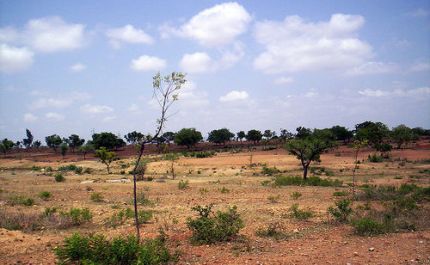Improved water use efficiency is key to tackling the country’s diminishing supplies, says President Pranab Mukherjee

With 17% of the global population, India has only 4% of the world’s renewable water resources. From 1,816 cubic metres in 2001, per capita availability of water in India has reduced to 1,545 cubic metres in 2011. It has been estimated that it will further reduce to 1,140 cubic metres by 2050, the country’s President Pranab Mukherjee reminded.
Inaugurating the Second India Water Forum in New Delhi on Monday, Mukherjee pointed out that population expansion, rapid urbanisation and developmental needs have exerted tremendous pressure on India’s water availability, and “water security, which already a formidable challenge, is going to aggravate in the future.”
The President harped repeatedly on water use efficiency to handle the challenge. The same point has been made in India’s draft National Water Policy 2012. One of the goals of the mission is to enhance India’s water use efficiency by 20%.
“By altering river flows, decreasing groundwater recharge, intensifying floods and droughts, and allowing salt water intrusion in coastal aquifers, climate change can severely affect water resources,” Mukherjee warned. “This challenge has to be met by efficient water management. As part of the National Action Plan on Climate Change, the National Water Mission was launched in 2011 with the objectives of water conservation, minimization of wastage and equitable distribution.”
The President wanted a doubling of efforts to recycle and reuse wastewater. Pointing out that agriculture is by far the largest water user in India – estimates range from 75 to 85% – Mukherjee said, “India has to also learn from countries like Israel where effective water policies and technological advances have led to water use efficiency in agriculture.”
The worrying decrease in groundwater levels in many parts of India also came under the President’s scrutiny, who said this had to be “contained by resorting to improved water use technology and better management of aquifers. Rainwater harvesting has to be popularised by dovetailing existing rural development schemes like Mahatma Gandhi National Rural Employment Guarantee scheme. Our initiatives at integrated watershed development have to aim at increasing the soil moisture, reducing the sediment yield and improving water productivity.”
Putting a price on water
Pricing of water has long been a political hot potato in India. Referring to this issue, the President said, “The pricing mechanism has to act as an incentive for saving and disincentive for wastage. The role of water users associations has to be strengthened by giving them adequate powers for collection of water charges and management of the water distribution system.”
One reason why water is usually inefficiently priced in India is that the subject is under the jurisdiction of state governments, municipalities and panchayats (village-level elected government bodies). Mukherjee said, “The current legal framework pertaining to water in India is non-uniform and inadequate to deal with the complex water situation. A broad over-arching national legal framework of general principles on water could pave the way for essential legislation on water governance in the country. Concerted effort is also required to make the water sector policies and regulations clear, coordinated and comprehensive. Only then can India hope to mitigate the impact of the looming water crisis.”
The Second India Water Forum is being organised by The Energy and Resources Institute with support from the Ministry of Urban Development, Ministry of Drinking Water and Sanitation and the Water and Sanitation Program of the World Bank.
During the three-day conference, experts are discussing water use efficiency in the agriculture, industrial and urban sectors; sustainable rural drinking water and sanitation; vulnerability in the water sector due to climate change; and a policy and governance framework and institutional arrangements that can enhance water use efficiency.
